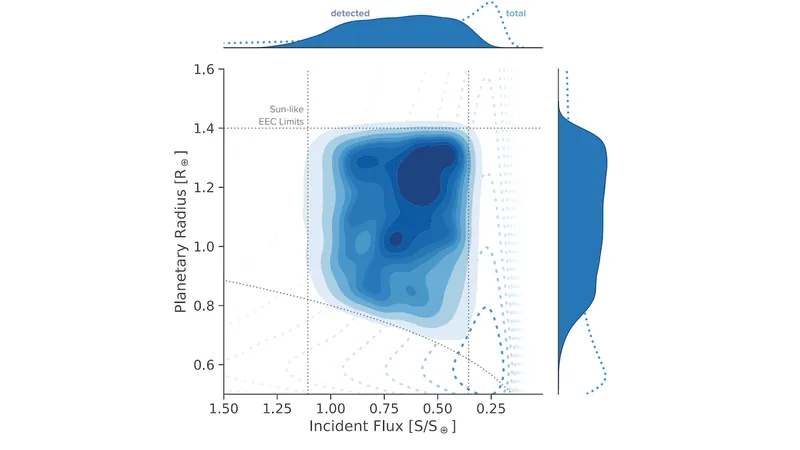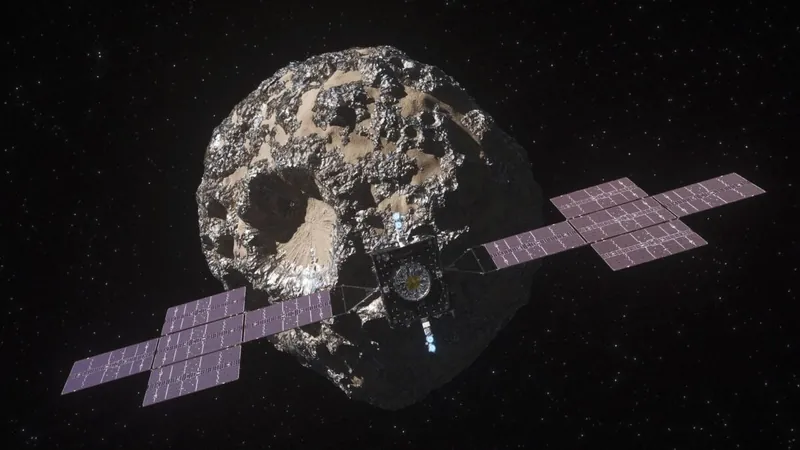
Unlocking the Secrets of Exoplanet Habitability: New Findings on Water, Carbon Dioxide, and Life
2025-06-01
Author: Jia
The Quest for Habitable Exoplanets
Understanding what makes an exoplanet capable of hosting life is a cutting-edge challenge in astronomy. Researchers are racing to identify key markers that indicate habitability and the potential for biospheres in distant worlds.
Future Telescopes: A Game Changer
While current technology makes these investigations challenging, the upcoming Large Interferometer for Exoplanets (LIFE) promises to revolutionize our approach. This next-generation observatory will provide unprecedented atmospheric observations of a wide variety of temperate terrestrial planets.
Decoding Carbon Dioxide: A Sign of Life?
With thermal emission spectra, scientists are assessing atmospheric CO2 variations within habitable zones—where the conditions might be just right for life. This research focuses on detecting CO2 patterns that reveal important geological processes like the carbonate-silicate (Cb-Si) weathering feedback, a significant indicator of habitability and potential biological activity.
Promising Results from Simulations
Researchers generated synthetic exoplanet populations based on climate and geochemical models. Their findings indicate a strong ability to detect CO2 trends among groups of at least 30 Exo-Earth Candidates (EECs), even with limited observational data quality. However, challenges remain: biases in CO2 measurements hinder a clear distinction between biotic and abiotic CO2 trends.
A Path to Accuracy
If researchers can correct these measurement biases, they predict that populations of 100 or more EECs will allow for accurate differentiation between planets that might harbor life and those that don't. The LIFE mission stands poised to enhance our understanding of atmospheric conditions and help identify critical indicators of exoplanet habitability.
Looking Ahead: Methodology and Implications
The team's innovative approach involved generating synthetic atmospheric populations, linking each planet with specific heat fluxes, and simulating the effects of the Cb-Si cycle on carbon dioxide levels. This groundbreaking methodology paves the way for future explorations into the vast diversity of planetary atmospheres.
In summary, with advanced observatories like LIFE on the horizon, the universe's secrets regarding exoplanet habitability are becoming more attainable. These findings not only deepen our understanding of carbon cycles but also enhance our search for life beyond Earth.




 Brasil (PT)
Brasil (PT)
 Canada (EN)
Canada (EN)
 Chile (ES)
Chile (ES)
 Česko (CS)
Česko (CS)
 대한민국 (KO)
대한민국 (KO)
 España (ES)
España (ES)
 France (FR)
France (FR)
 Hong Kong (EN)
Hong Kong (EN)
 Italia (IT)
Italia (IT)
 日本 (JA)
日本 (JA)
 Magyarország (HU)
Magyarország (HU)
 Norge (NO)
Norge (NO)
 Polska (PL)
Polska (PL)
 Schweiz (DE)
Schweiz (DE)
 Singapore (EN)
Singapore (EN)
 Sverige (SV)
Sverige (SV)
 Suomi (FI)
Suomi (FI)
 Türkiye (TR)
Türkiye (TR)
 الإمارات العربية المتحدة (AR)
الإمارات العربية المتحدة (AR)